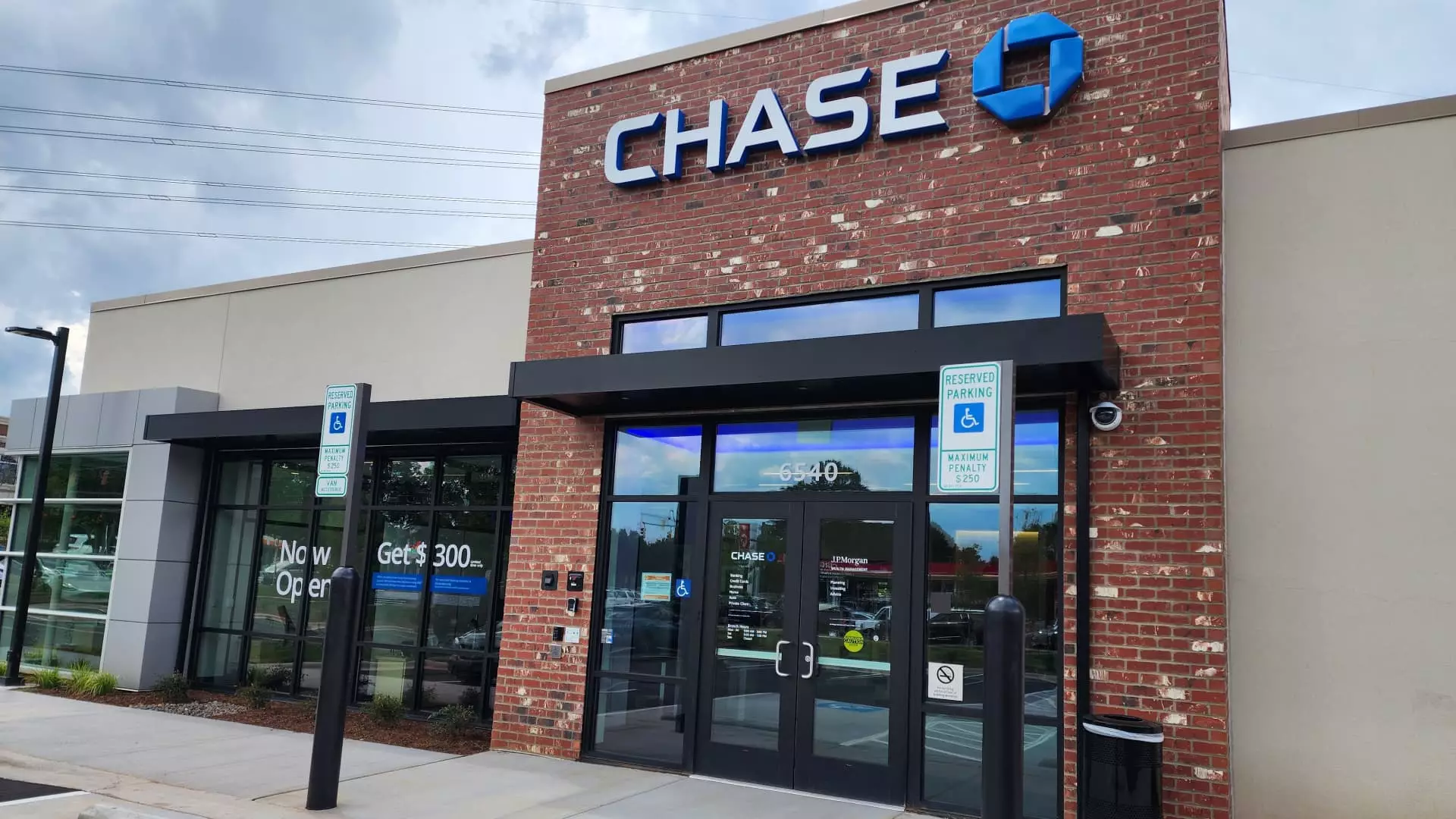In recent years, JPMorgan Chase has embarked on an aggressive expansion campaign that redefines the traditional landscape of banking. Building 1,000 new branches over just seven years is an extraordinary feat that surpasses the efforts of many competitors, raising pertinent questions about whether this strategy signifies resilient growth or reckless overreach. As the largest U.S. bank in terms of branches, JPMorgan’s bold move positions it at the forefront of brick-and-mortar banking resurgence. However, this assertiveness must be scrutinized through a pragmatic lens, considering the economic and technological currents reshaping the industry.
From a purely strategic standpoint, JPMorgan’s decision to heavily invest in physical locations suggests a belief that traditional banking channels still hold substantial importance. The expanding footprint appears designed to capture new deposits, deepen customer relationships, and maintain its competitive edge in a shifting financial world. Yet, critics might argue that this expansion dismisses the enduring decline of physical branches, a trend accelerated by digitization. The company’s confident projection that each new branch breaks even within four years hints at a well-calculated, data-driven approach, but it ignores the possibility that consumer preferences are permanently shifting away from face-to-face banking.
Reasserting Presence in a Digital Age
Despite the rise of fintech and online banks, JPMorgan’s large-scale expansion indicates a nuanced understanding of the importance of physical spaces, especially in a post-pandemic era characterized by demographic shifts and regional growth. Focusing on markets like Charlotte, where the bank is now competing directly with Bank of America’s entrenched dominance, reflects a strategic move to secure future deposits and influence. The decision to penetrate markets with a “young, fast-growing population” underscores a longer-term vision: cultivating loyalty early and establishing a physical presence amid a surge of incoming wealth.
Nevertheless, this approach comes with significant costs. Opening and maintaining thousands of branches requires capital, operational oversight, and a delicate balance between physical and digital offerings. While JPMorgan claims that this expansion will drive over $160 billion in incremental deposits, the sustainability of such gains remains uncertain. It’s worth questioning whether traditional bank branches can deliver sufficiently high returns in an era where consumers increasingly prefer mobile and online solutions for everyday banking needs. The risk lies in overestimating the resilience of brick-and-mortar outlets in a world that favors convenience and digital immediacy.
Industry and Market Implications
JPMorgan’s aggressive expansion may serve to rekindle a dwindling industry altogether. Since the 2008 financial crisis, the number of bank branches nationwide has declined sharply, primarily due to efficiency drives and technological innovations. Yet, this new wave of growth suggests some banks see value in reversing that trend—especially as regional and local demographics reshape the banking ecosystem. The plans announced by peer giants like Bank of America and Wells Fargo underscore a broader acknowledgment: physical branches still appeal, especially in terms of relationship banking and deposits for large-scale financial institutions.
This renewed focus on physical presences might also signify an ideological shift toward balancing digital innovation with tangible customer touchpoints. But at what expense? Each new branch consumes resources that might otherwise be invested in technological enhancements or digital services—areas where rising consumer preferences lie. JPMorgan’s gamble hinges on the belief that physical branches foster trust, facilitate complex financial services, and offer a competitive edge. However, if the industry’s trajectory continues toward online dominance, this expansion could become an expensive relic rather than a sustainable growth engine.
Is Bigger Truly Better in Banking?
While JPMorgan’s expansion strategy emphasizes growth and dominance, it also raises broader questions about the future of banking in America. Is the expansive physical footprint a sign of strength or a delayed recognition that the industry must evolve beyond bricks and mortar? The fact that JPMorgan’s new branches are projected to contribute profits within four years suggests confidence, but margins in banking are razor-thin, and economic turbulence could quickly alter profitability outlooks.
Furthermore, by entering new markets, JPMorgan risks diluting its brand and resources if customer preferences continue to gravitate toward digital solutions or if regional economic circumstances falter. The focus on deposit accumulation might also lead to a hollow victory if digital banks or fintech disrupt the traditional deposit model altogether. This aggressive expansion can be seen as a center-right liberal approach—balancing the importance of physical banking with a pragmatic recognition of digital trends. It reflects a belief that traditional strengths, if leveraged wisely, remain valuable in a changing environment, but it also demands caution.
In essence, JPMorgan’s expansive push could either reinforce its dominance or expose vulnerabilities that other forward-looking institutions are already cautious of. Its daring gambit invites debate—and scrutiny—about whether size, physical presence, and traditional banking still hold the power they did in decades past.

